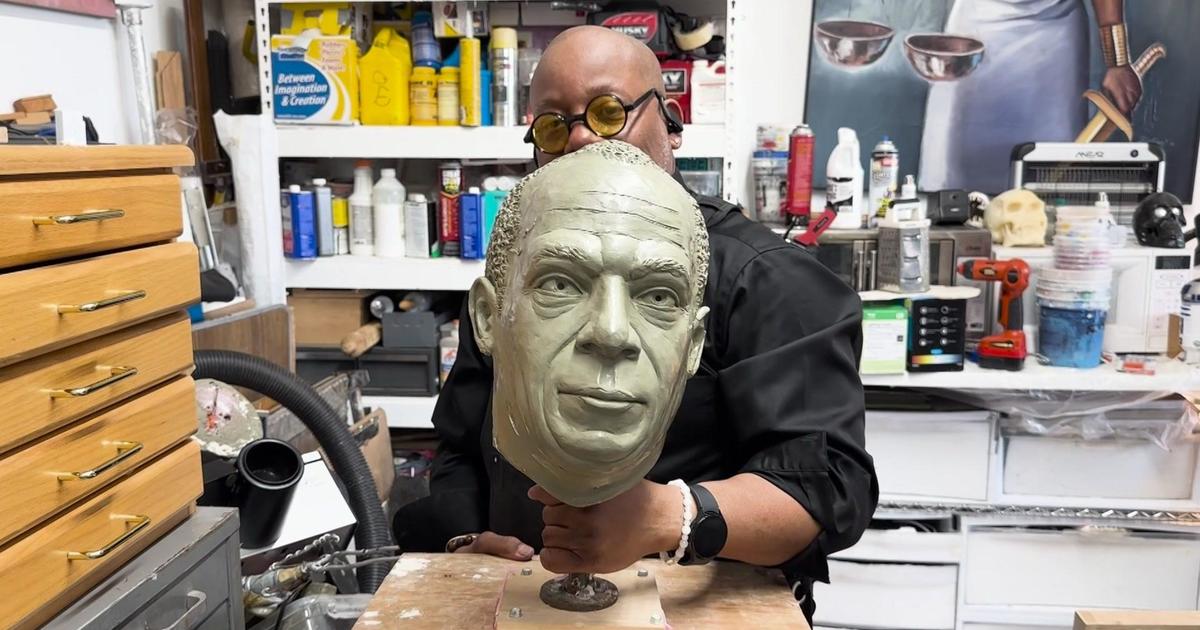Apollo 11's 4th Crew Member: A Ground-Breaking, 70 Pound Computer
(CBS) – On July 6, 1969, Apollo 11 lifted off with its sight set on the moon. The crew consisted of Neil Armstrong, Buzz Aldrin and Michael Collins, but there was a crucial "fourth crew member" on board: the Apollo Guidance Computer or AGC.
"The Apollo Guidance computer was the most intricate and complex control computer and navigation computer that existed," said Bob Zagrodnick, who managed the AGC project.
The computer was fairly compact for its time. It weighed 70.1 pounds and required 70 watts at 28 volts DC.
"By today's standards, the Apollo computer which was two feet long, about a foot wide and six inches thick, would be the size of a big cell phone," Zagrodnick chuckled.
Norm Sears, the Technical Director for the Apollo Mission Development said digital computer development was brand new at the time. "Very new, and it was pushing the technology. We had to work within the weight limits that that Saturn boosters could put into orbit."
"Weight was always a big factor," Zagrodnick recalled. "We changed from aluminum structures to partially magnesium to make the housings for the computers and equipment lighter."
 The Apollo Guidance Computer (Image: NASA)
The Apollo Guidance Computer (Image: NASA)
The AGC controlled every aspect of the Saturn V rocket with help from computers on Earth. It also had to operate independently, for times when signals were lost.
"The whole mission was basically, I believe, controlled by Houston, but the computers were also designed to be autonomous in flight," Zagrodnick explained. "In the event that their communications link was broken, the computers kept up with the whole mission profile and would be able to take over autonomously."
Crew members communicated with the AGC using display and keyboard units known as DSKY. The computer in turn would communicate with the crew by flashing displays with words like PROG, VERB, and NOUN.
It took about 10,500 keystrokes to complete a lunar mission.
The AGC took advantage of a new technology called Core Rope Memory, a memory chip with wires that were literally sewn together by women in factories. Core Rope Memory could hold 18 times more data and required less space than traditional memory.
As the Apollo Guidance Computer was completed, it was installed in both the Command Module and the Lunar Module. There were no backups.
"It had to not only work, but it had to work the first time," said Margaret Hamilton, who was in charge of the Apollo on-board flight software.
As the Lunar Module was 30 seconds away from landing on the moon, an alarm went off threatening to abort the mission.
"All of a sudden the priority alarms came on: 1201 and 1202. Right away I knew that those alarms came on when there was an emergency and they had no business going on right then," Hamilton recalled.
The AGC and its software performed so well it recognized a power supply issue, preventing the mission from aborting.
"I like to say not only was that the first human on the moon but the first software to run on the moon," Hamilton laughed.
The Apollo Guidance Computer was used on many earth-orbital missions, six lunar landing missions, three Skylab missions, and the Apollo-Soyuz project.
"There's very good memories," Hamilton said of working on the Apollo 11 project. "There's the drama you think of that you went through together with a lot of people, how fortunate it was that I was involved in that drama."



